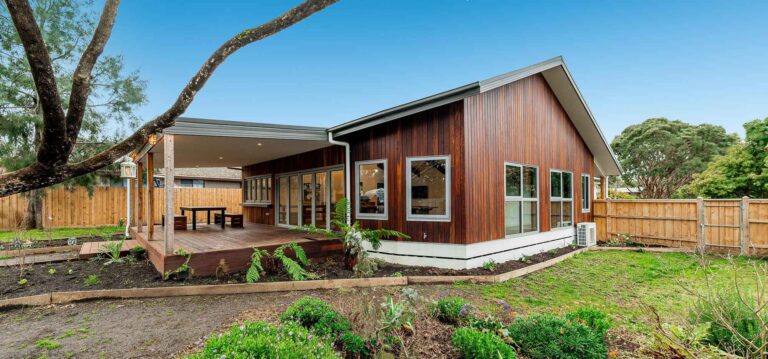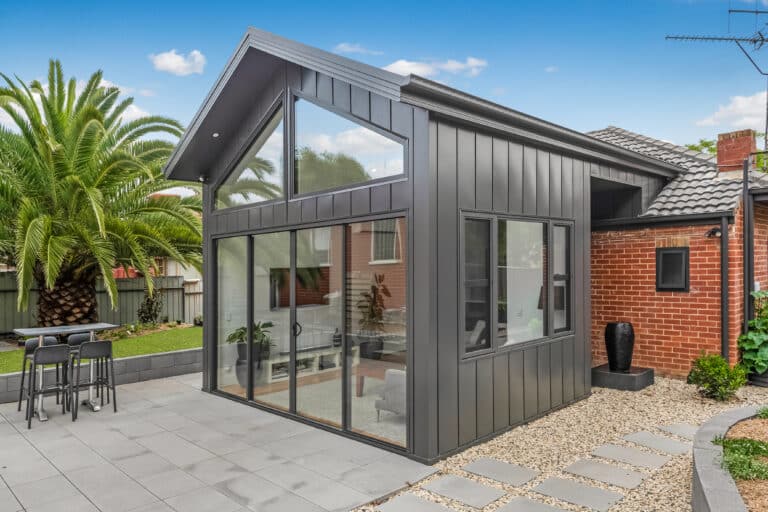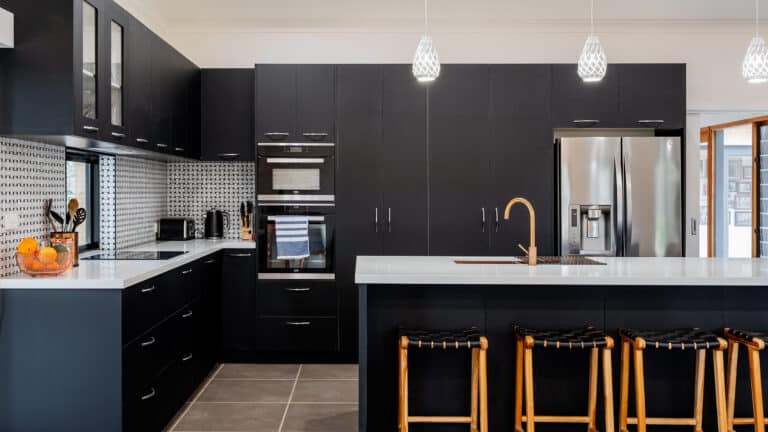There are some key considerations to keep in mind when planning a kitchen renovation project.
Why Renovate Your Kitchen in the First Place?
The kitchen is often referred to as the heart of your home and conducting a renovation in this area can make a considerable difference to how your home works on a daily basis. Imagine an uncluttered, stylish design with adequate room for homework, cooking meals, sitting down for a coffee or entertaining guests.
A kitchen renovation isn’t just an investment into how your home functions; it can add value to your property. A well-planned, organised and attractive kitchen can improve your daily life and home’s value significantly.
Considerations For A Successful Kitchen Renovation
Renovating your kitchen can transform how you experience everyday life, but it takes careful consideration and an organised approach to get it right.
Planning
Ensuring you have conducted adequate planning is crucial to a successful kitchen renovation. There are some fundamental questions you should answer before you begin your project.
For example, why are you renovating in the first place? Are you looking for more storage, better functionality or a style upgrade? What do you want your new kitchen to look like? Do you have a deadline, like hosting a Christmas lunch, that it needs to be completed by? How much do you want to spend?
Asking the right questions at this stage of project lays a key foundation that can be built upon moving forward.
Budget
The costs of a kitchen renovation will vary depending on the size and scope of your project. The key is to be clear about your priorities for your renovation, so you can focus investment where it matters most. It is advisable to prepare – and stick to – a detailed and itemised budget.
Determining your budget is one of the most important steps in any renovation project. It can be easy to get caught up in grand ideas or naivety around how much these projects cost. Understanding the design you want and the cost usually associated with it is a great place to begin. It is advisable that a contingency plan of around 10 – 20% is allocated for any unforeseen expenses.
Storage & Layout
This is where you are able to dive in to the specifics of design, particularly how your kitchen is going to function as an area of your home. Storage space will need to be allocated, for everything from food and utensils, to cleaning products and waste. Time will need to be spent determining how everything will be arranged so you can move efficiently and effectively between work surfaces, appliances and clean up areas. If these considerations seem daunting at first, there’s no need to worry – you don’t need to reinvent the wheel.
Colours & Style
When choosing your kitchen colour scheme and style, there are plentiful options to consider. You may have an idea in mind of which colours you prefer, but there are an infinite number of shades, tones and hues to select from. What about harmony? When choosing colours and styles, you need to keep everything in mind – from your walls, floors and cabinetry, to the colour of your appliances or selection of pot plants. These small details can make, or break, the cohesion of your kitchen design.
Materials & Fixtures
Your choice of materials for benchtops, drawers, doors and internal cabinetry consolidates your chosen style and colour palette. Considerations need to delve deeper than just visual aesthetics, as durability and maintenance requirements are crucial in a frequently used area like a kitchen. Striking a balance between visual appeal and practicality applies to fixtures including splashbacks, tapware, sinks, appliances, lighting and flooring. These aspects of your kitchen can play the role as signature design elements but must be efficient in the day-to-day operation of your space.
Kitchen Styles To Consider
The style you select plays a critical role in the overall look and feel of your kitchen, as well as its functionality and appeal. The following is a brief overview of some popular styles you could consider.
Traditional
Traditional kitchen styles are classic and timeless. They often utilise traditional materials including timber for flooring or cabinetry, and marble for benchtops. Traditional kitchens focus on symmetrical design, incorporating intricate detailing such as wainscoting and crown moulding.
Contemporary
Contemporary kitchen styling can be characterised as subtle and sleek, placing focus on simplicity and clean lines. Contemporary kitchens feature minimalistic design elements including stainless-steel appliances paired with neutral colours and minimal décor.
Mediterranean
Inspired by the coastal regions of Italy, Spain and the south of France, Mediterranean kitchen styles feature warm, earthy colours. They utilise materials such as terracotta, stone and marble, often including elements such as arched doorways and splashbacks with intricate tiling.
Farmhouse
Taking inspiration from the rustic charm of country living are farmhouse style kitchens. This kitchen style places natural materials at the heart of the design. Often constructed utilising timber, stone and bricks – farmhouse style kitchens regularly feature elements such as shiplap walls and distressed finishes.
Mid-Century Modern
Mid-century kitchen styles are inspired by popular design trends made prevalent in the 1950s and 60s. They generally feature geometric shapes, clean lines and place a focus on functionality. Mid-century styles utilise a mixture of natural and man-made materials including vinyl, timber, acrylic and marble.
How Much Will A Kitchen Renovation Cost?
Generally speaking, on average in Australia a kitchen can cost between $20,000 – $75,000. The price is dependent on your desires for your kitchen makeover and doesn’t include other trades and the extra work needed to facilitate your design. The price varies greatly based on a range of factors, including the size, design, complexity and materials utilised, among other things.
The aspect of a kitchen renovation that impacts the budget the greatest is the materials used. For example, laminate benchtops are cheaper than marble or granite tops. Vinyl wrapped doors with detailing are more expensive than flush laminate panels. When determining your budget, it is crucial to differentiate what is a necessity in the renovation and what would be nice to have.
Due to the personalised nature of each kitchen renovation, every project will vary based on design factors and material requirements. Your project manager at Yarrington will work closely with you to provide transparent quoting during preliminary discussions and the design process. We pride ourselves on assuring our clients that there will be no hidden costs.
Why Choose Us For Your Kitchen Renovation Project?
At Yarrington, your complete satisfaction is vital to us. Our team works with you to tailor a design to suit your space and requirements. With over 20 years of experience in construction, our team is well equipped to assist you with any design choices.
We work with you to design and construct a kitchen that meets your family’s lifestyle and budget. Having extensive experience in the industry, we’ve completed countless kitchen renovations across a range of styles – from modern chic to classic elegance.
With access to only the highest quality materials and new appliances, we strive to deliver a custom-made kitchen of your dreams. Get in touch with our expert team to get your kitchen project underway.


